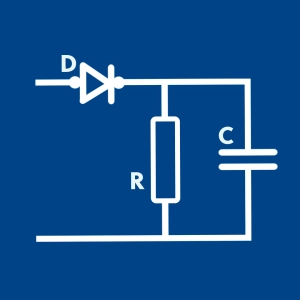 Amplitude Modulation (AM)
Amplitude Modulation (AM)
Learning objectives
- To illustrate the forms of signals at each stage of an amplitude modulation.
- To simultaneously observe frequency and time analyses of an amplitude modulated signal.
- To teach the objectives of modulation, particularly by using frequency analysis to show that it is possible to transmit several signals using several carrier waves.
- To define the index of modulation.
The modulation of a signal is essential if one wishes to transmit it over long distances. Modulation also provides a means for simultaneous transmission of several signals, using the same transmission channel (Hertzian, cable ...).
Amplitude Modulation (AM) is the simplest and the oldest of modulation methods, primarily because the stage of demodulation, at the receiver, is simple to carry out. A modulator, followed by a filter, is sufficient to obtain an amplitude modulated signal, but it should be pointed out that this type of modulation generates numerous distortions and so frequency modulation (FM) is now the preferred modulation method.
Change the settings of the input signal with the sliders.

Discover EduMedia for free
The interactive encyclopedia that brings science and math to life in the classroom.
Over 1,000 resources





